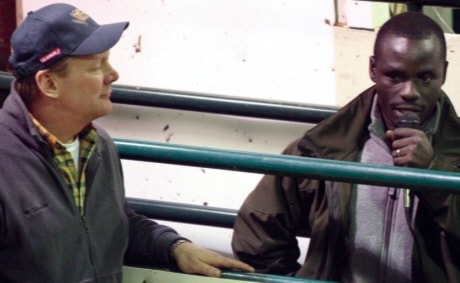By CHARLES TWEED
“Sold! For 98 cents a pound,” announced the auctioneer.
Cattle prices certainly have rebounded from where they were a few years ago, which is good news for agencies like the Canadian Foodgrains Bank (CFB).
The CFB held its 10th annual Beef and Dairy Fundraising Sale at Vold Jones Vold Auction Mart in Ponoka and raised more than $73,000 to help end hunger around the world.
“You’re never quite sure of the number of donations until the sale starts but everyone has been very generous,” said volunteer Larry Henderson.
“We had 67 cattle in total and we raised the second highest amount of money. And with the CIDA matching every dollar raised four to one, we should be around $370,000.”
Henderson thanked producers for the great donations and the buyers who supported the sale.
One of the more interesting sales was that of a billy goat that sold a total of seven times before finally being awarded to the bidder. The bidders would buy the goat, for anywhere between $100-$150 and then donate it back to CFB so it could be sold again and raise more money.
Before the sale began, Terence Barg, regional coordinator with CFB, addressed the crowd but it was Samuel Ocung who stole the show.
Ocung works with the Foodgrains Bank in Uganda and talked about where the proceeds go and how much they help around the world.
He thanked Albertans for their generosity.
Last year Albertans gave more than $2 million in cash and grain donations, second among provinces in Canada.
The program is a partnership of Canadian churches and church-based agencies working in conjunction to end hunger in developing countries. But it’s not just food that will be provided by the money.
“There is more and more need around the world all the time. And some of the money will go to development and agricultural projects, water projects and conservation. It’s about trying to achieve self-sufficiency,” said Henderson.
